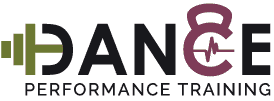Fix It Friday will feature common injuries in dancers with a few tips to improve or prevent them!
Simple starter guide to help if you have mild or symptoms similar to Osgood Schlatter per client request! Check back in 2 wks for the next phase.
Osgood Schlatter is a condition that can greatly benefit from skilled Physical Therapy, but if waiting or just want something in addition, can try these out. First phase is typically decreasing stress on the injured knee and improving all the muscles around it (less knee bending).
Hip Flexor/Quad Stretch: Shouldn’t feel in lower back. Keep torso & core tight as you push hips forward to feel stretch. Around 1 min, 2-3 times/day.
Side Lying Hip Abduction on Wall: Limit back arch by pressing both hips, foot, & shoulder against the wall, then slightly rolling away from wall, keeping foot pointed straight ahead. Begin to raise & lower the leg. Should feel on top hip. Can add ankle weights, shooting for 8-15 reps
Single Leg Dynamic Balance: Get the whole leg working together with dynamic balance. Slightly increase the knee bend as your able with low to no pain. Keep your body still as toss a ball, spin it behind your back, bounce it sideways, etc.
Every exercise should feel hard, but not impossible. Start with higher reps, then as able, increase resistance as get into the lower rep range.
Repeat this circuit 3 times 4-5 times a week initially. Can decrease to 2-3 times per week when feeling better, then move on to phase 2 coming in two weeks. If pain is already very high, unlikely a few new exercises will help, you likely need a more specialized program.
This is not medical advice. This is general exercises performed for this condition. Please seek professional advice for injuries or pain persisting over time. If general exercise gives you pain, you likely need more specific and direct attention. Take care of your body.
To keep up with our vides, follow along here or on any of our social media platforms.
Scott DPT
#BeyondCrunchesandPilés








